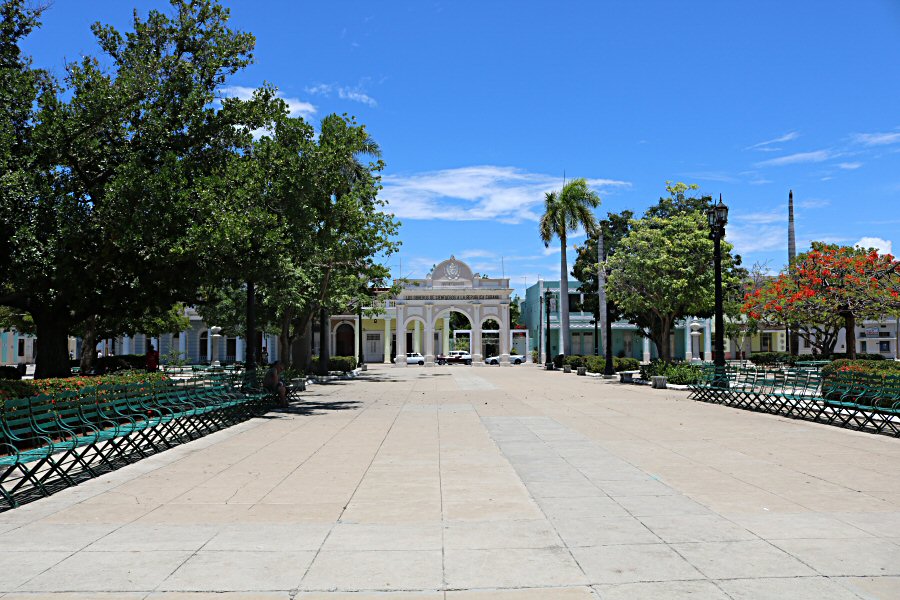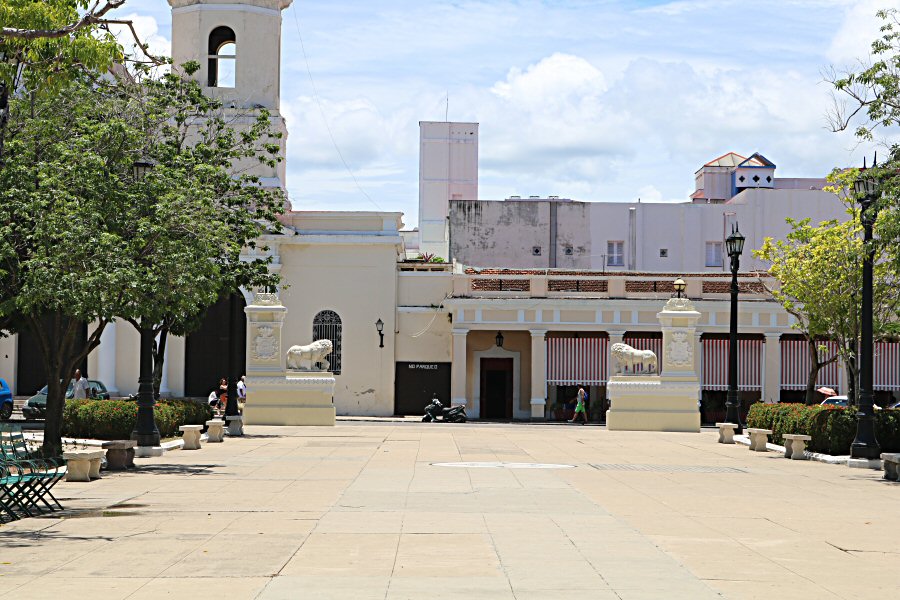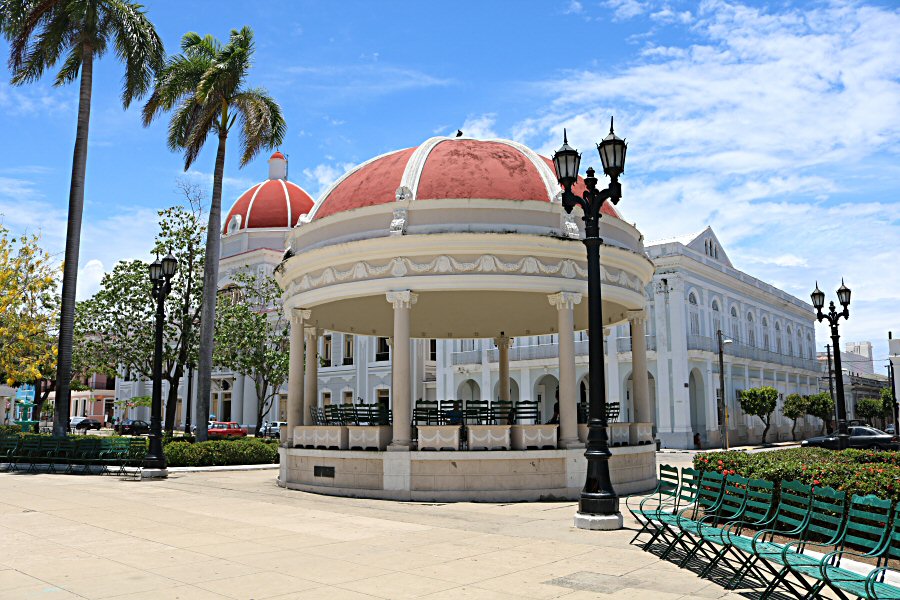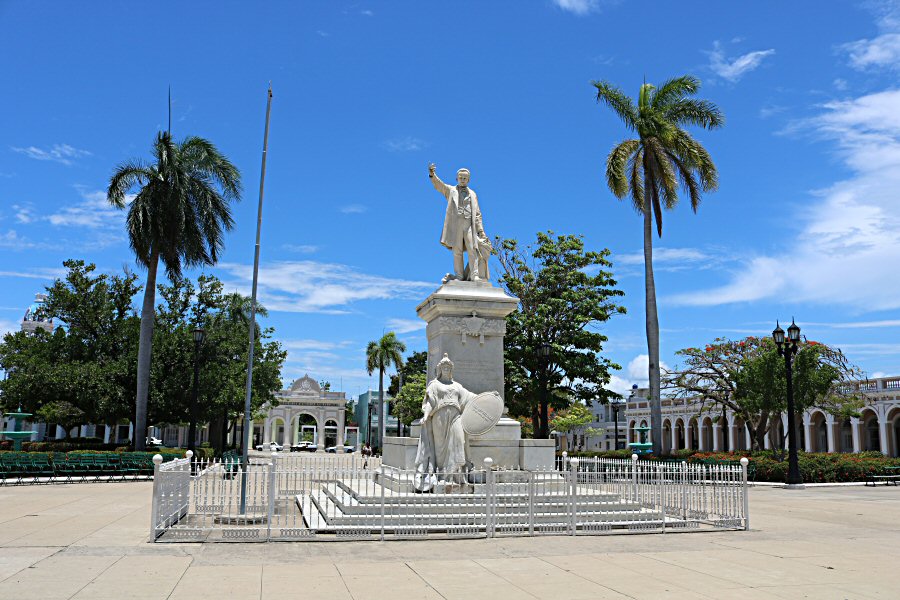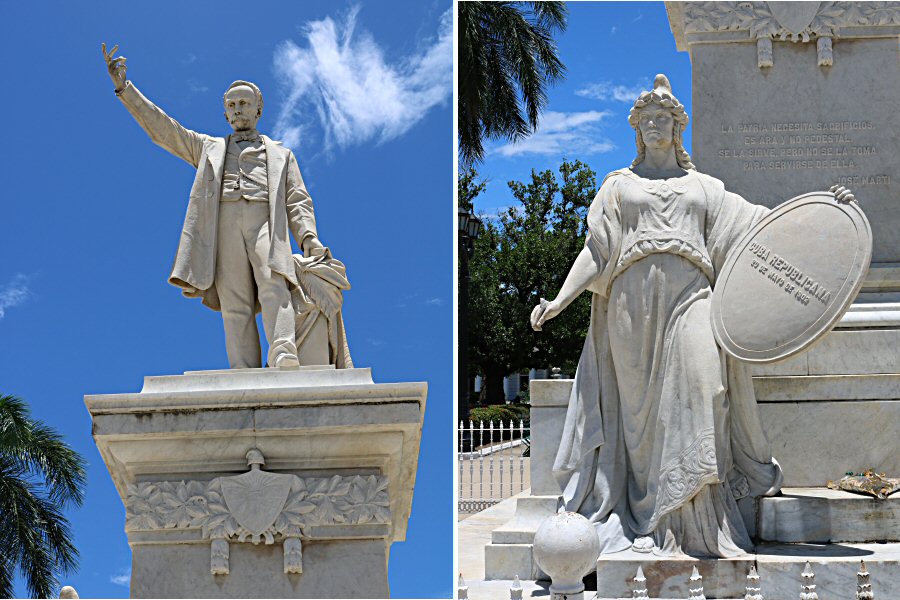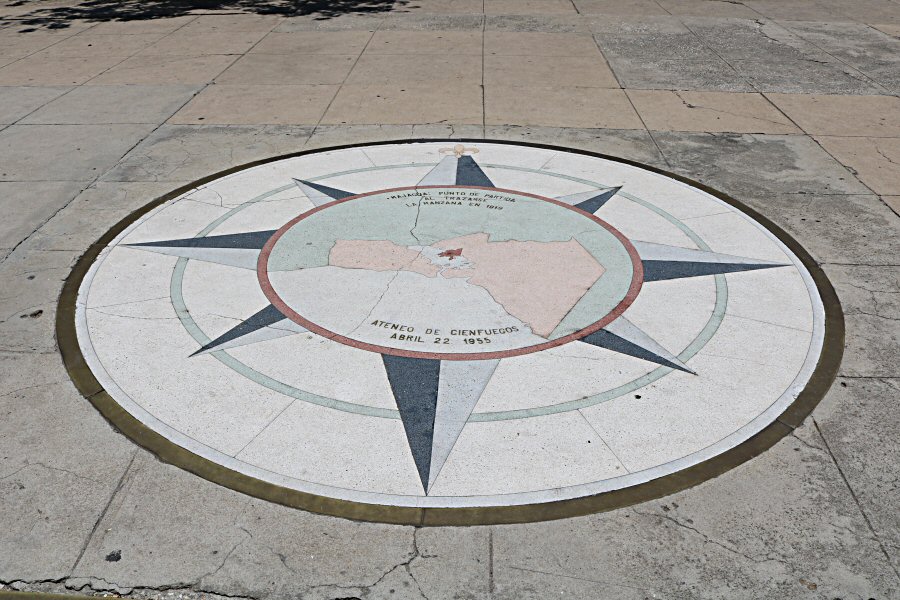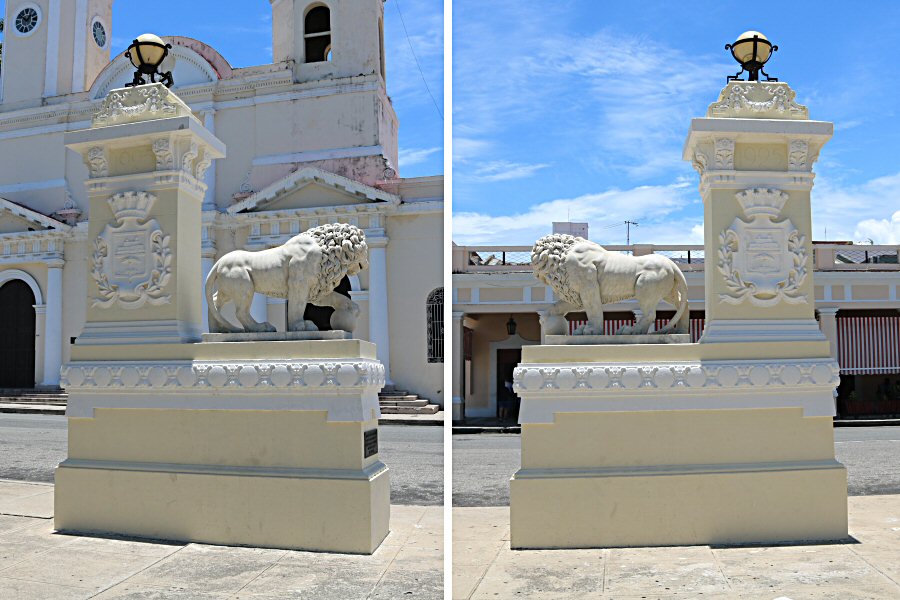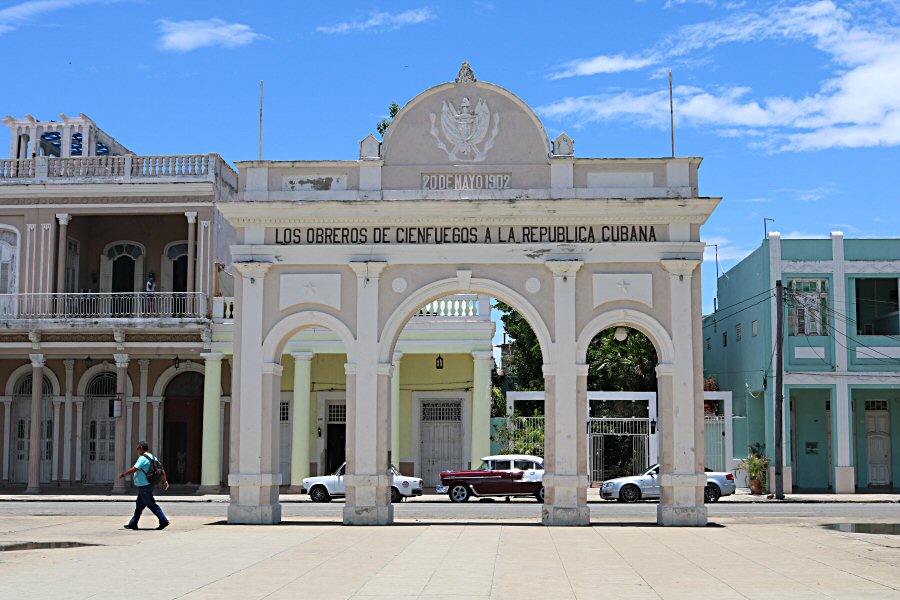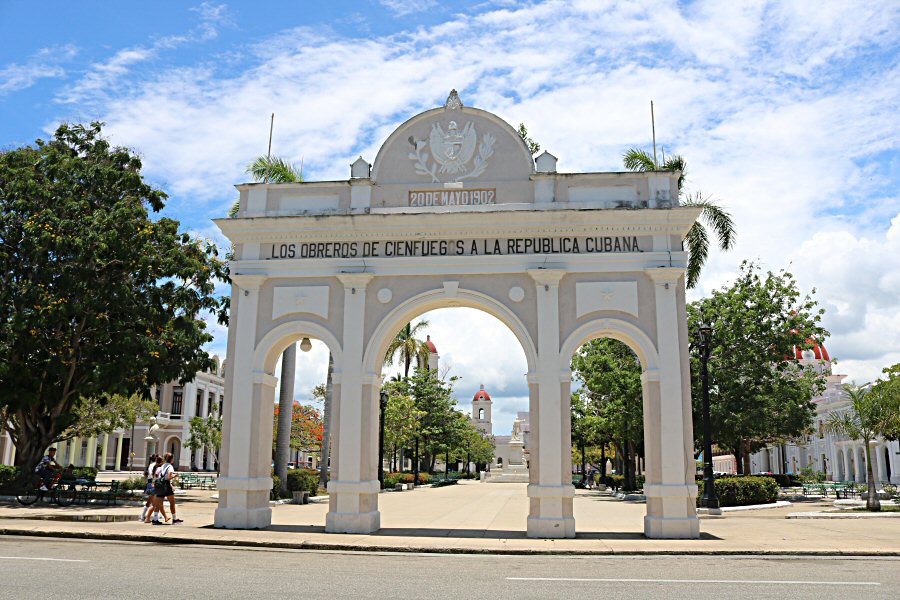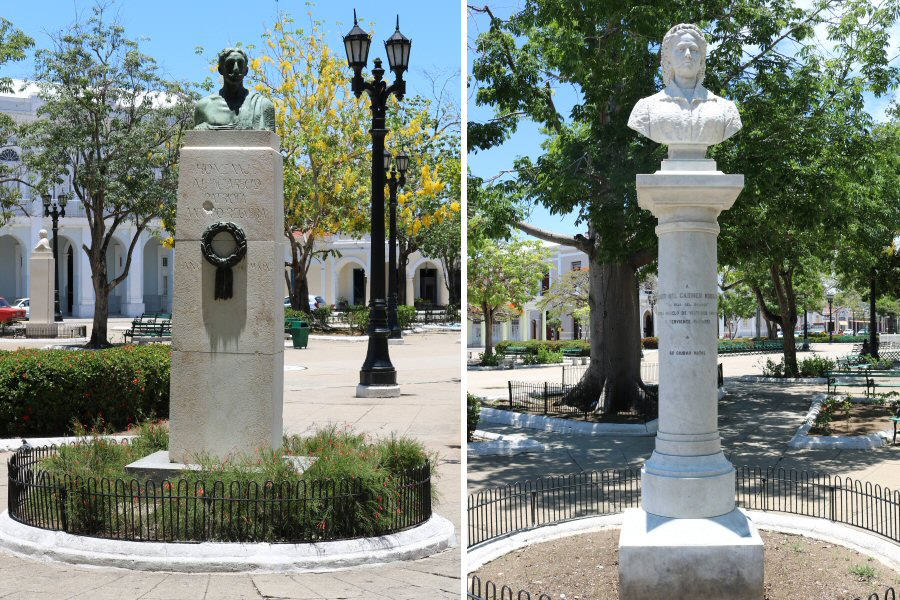
Today
Parque José Martí is one of the important places where people living in Cienfuegos meet and chat together. The park, which is one of the cornerstones of the old city, is a place frequently visited by tourists due to the important historical buildings in the surrounding.
Two beautiful marble lions are guarding the main entrance of the park on its east side in front of the Catedral de Nuestra Señora de la Purísima Concepción (Cathedral of Our Lady of the Immaculate Conception). They are the first sculptures of the region, brought from New York by Colonel José de la Pezuela, Governor of Cienfuegos in 1862.
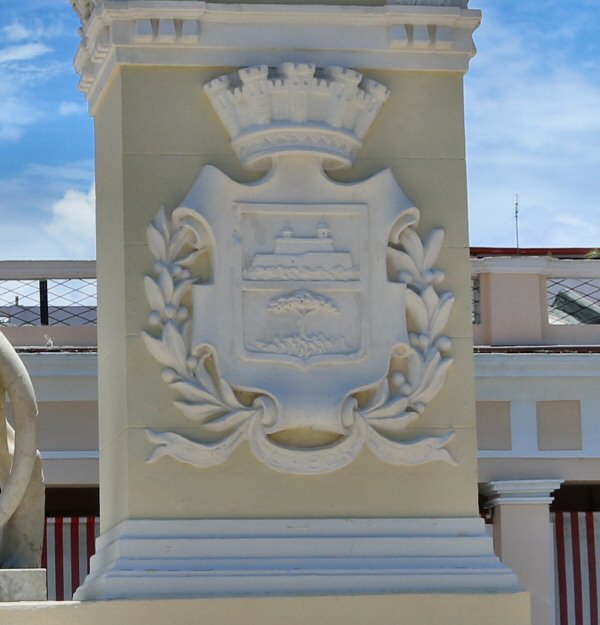 On
the pedestal of the lion statues is the coat of arms
designed for Cienfuegos. The inner shield is quadrilateral
and is divided into two quarters. In the upper one, on the
blue field, appears the golden front of the Jagua Fortress,
and in the lower one, on the silver field, a majagua tree.
The body of the cot of arms is topped by a mural crown of
five castles and two lateral bunches of laurel.
The inscription below the coat of arms reads fides, labor et
unió (faith, work and union) in Latin.
This symbol was designed by Don Agustín de Santa Cruz in
1831. It was adopted by the City Hall on July 4, 1848, when
the Villa de Cienfuegos was granted the right to use this
coat of arms by the Royal Order of Isabel II on April 2,
1848. In the colonial time their place and pedestal were
changed twice.
On
the pedestal of the lion statues is the coat of arms
designed for Cienfuegos. The inner shield is quadrilateral
and is divided into two quarters. In the upper one, on the
blue field, appears the golden front of the Jagua Fortress,
and in the lower one, on the silver field, a majagua tree.
The body of the cot of arms is topped by a mural crown of
five castles and two lateral bunches of laurel.
The inscription below the coat of arms reads fides, labor et
unió (faith, work and union) in Latin.
This symbol was designed by Don Agustín de Santa Cruz in
1831. It was adopted by the City Hall on July 4, 1848, when
the Villa de Cienfuegos was granted the right to use this
coat of arms by the Royal Order of Isabel II on April 2,
1848. In the colonial time their place and pedestal were
changed twice.
On the west entrance
of the park, you will find a triumphal arch, called as Arco
de los Obreros (Workers’ Arch). It is dedicated to the
movement of the laborers in Cienfuegos during the
establishment of the Republic of Cuba on May 20, 1902.
In the middle of the
park, there is the white Carrara marble statue of of
José Martí, surrounded by an iron fence, painted in white.
He is depicted giving a heated speech to the crowd. As a
matter of fact, his own sentence is written on the
pedestal.: “La patria necesita sacrificios. (…) Se la
sirve, (…). // The homeland needs sacrifices. (…) It is
served to it, (…).” In front of the José Martí
statue, there is a white marble female statue representing
the Republic. The statue of of José Martí was erected
in 1906. It is the work of tle Italian sculptor Giovanni
Nicolini. Prior this statue, there was the statue of Isabel
La Católica, the Queen of Spain, erected at the beginning of
the paved walk of Serrano in 1840. At the end of the War for
Independence, it was removed and replaced by the majestic
sculpture of the national hero.
In the place where
it is said that the majagua was chosen as the starting point
of the layout of the city in 1819, there is today a round
marble shield on the ground, mounted in 1955. On this
monument, where Cienfuegos and its surroundings are
depicted, the outline of the municipality is indicated in
dark brown.
There are six busts
placed around the park. These belong to the notables of the
city, such as Ramón María de Labra (Brigadier, unforgettable
Governor of Cienfuegos from 1844 to 1848), Antonio Reguera y
Acea (rich landowner in Cienfuegos), Antonio Hurtado del
Valle (Cuban writer and revolutionary), Clotilde del
Carmen Rodríguez (poetess), Dr. med. Alfredo Méndez Aguirre
(surgeon), Nicolás Salvador Acea de los Ríos (a rich and
educated personality from Cienfuegos, unforgetable by his
exceptional humility and noble sentiments).
